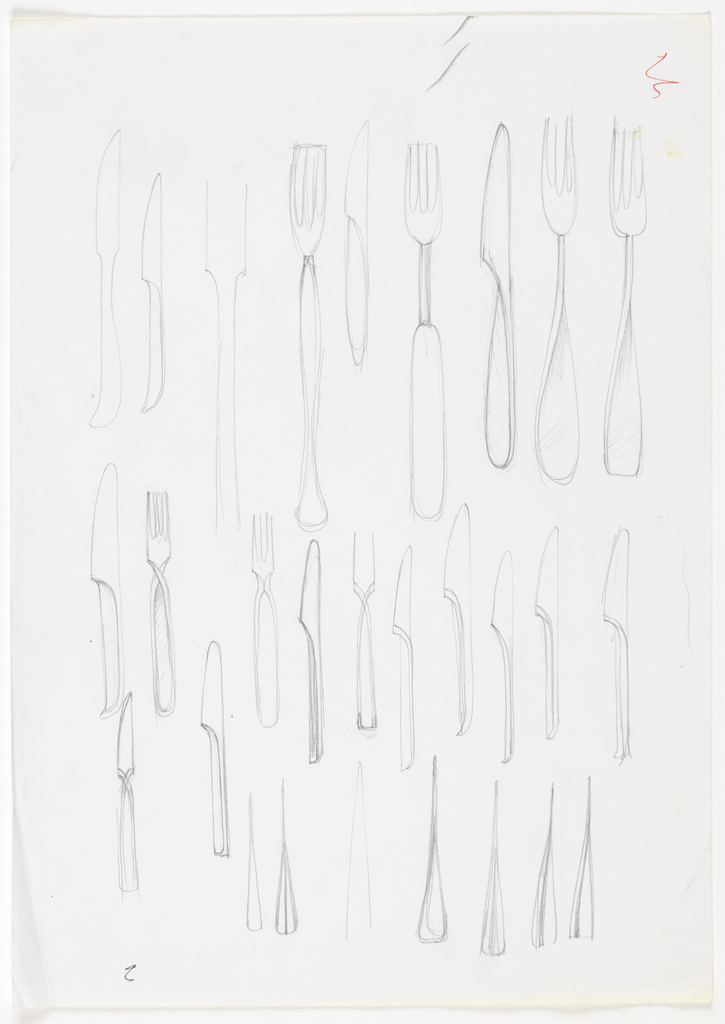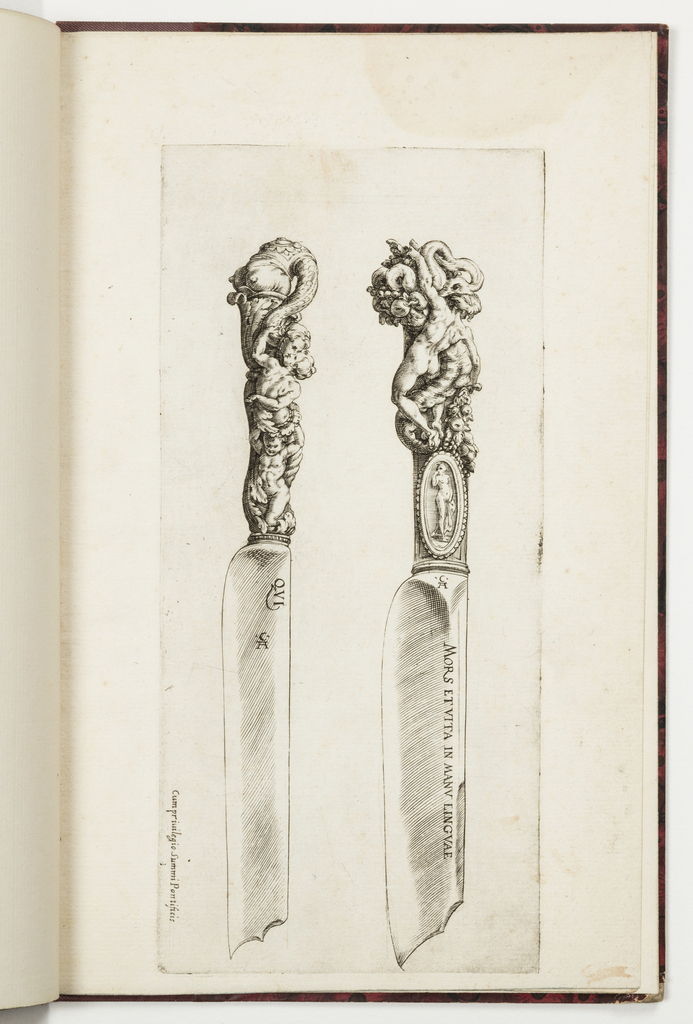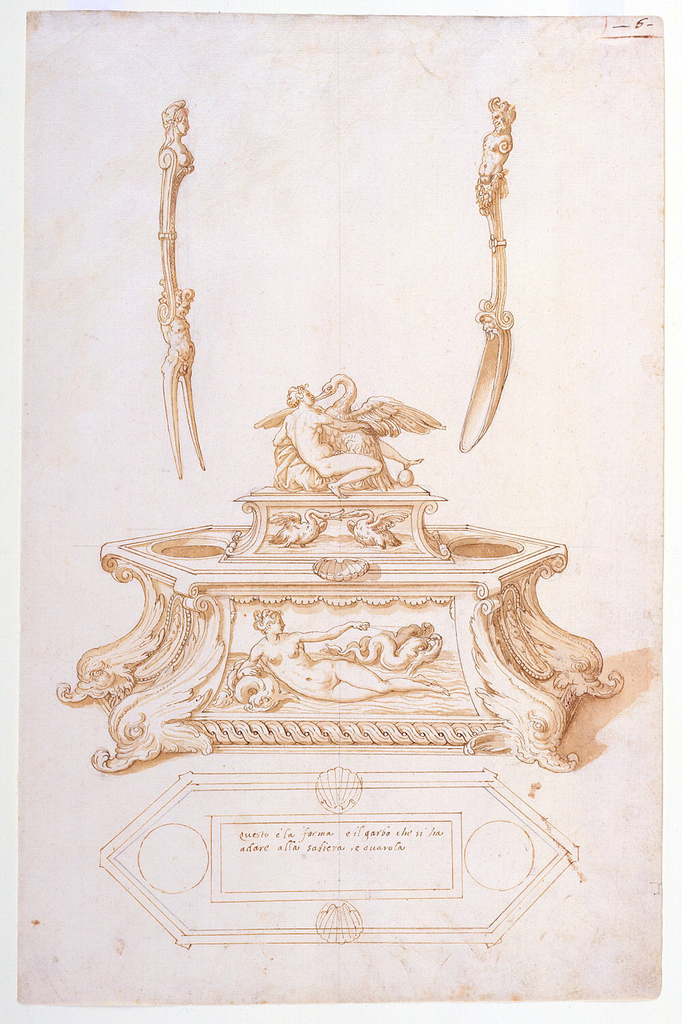This post was originally published on November 10, 2013. Gerald Gulotta became an established freelance designer of ceramics, glassware, silver and stainless steel cutlery during the 1960s and 1970s. His sleek, slender, elegant tabletop designs look as contemporary today as they did during the height of his career. The Drawings, Prints and Graphic Design department recently acquired...
“Death and life are in the power of the tongue,” warns a proverbial inscription on a knife blade imagined by Francesco Salviati. Knife handles further illustrate the tongue’s pleasures and perils, and these sensuous yet violent scenes seem to caution diners about to indulge. On one handle, a figure risks a snakebite to reach into...
Poached, fried, boiled, or roasted, eggs were an important part of the Italian Renaissance diet. In the sixteenth century, Italian chefs Bartolomeo Scappi and Cristoforo da Messisbugo each published cookbooks that detailed recipes and techniques for preparing banquets, and eggs were often on the menu. One of Scappi’s reoccurring recipes was for uovo da bere, or...


